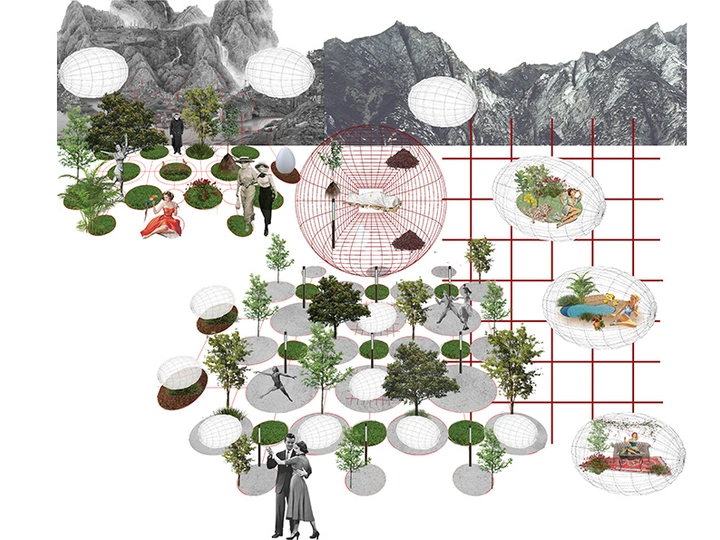Hospital is not a Hospital

GALINI NIKOLAIDI
Our scientific interests are summarized in the relationship between nature and the city in all scales of design, with an emphasis on emerging synthetic explorations, at interculturality, in environmental concerns but also in issues of space and gender, through sexuality, the body, speech, materiality and meta-
human thought. We have deepened our research into specific mapping issues and design such as places for burial, cremation, composting of dead bodies, etc. On September in 2022 together with we founded DE|ATH|FORMATION, an independent group based in Athens researching the concept of "Death" in architecture theory and planning but also the contribution of architecture to alternative forms burial. We are both Αrchitects and Researchers, graduates from the school of Architecture of the Technical University of Crete and at this moment we are postgraduate students in the National Technical University of Athens in the postgraduate program "Research in Architecture: Architectural Design - Space - Culture", in the direction of epistemology of Architecture.
The redefinition of a healing area, through biophilic terms, led to the creation of three temporary sites of different scales, which when their stay is over, are unscrewed, disassembled and taken, to be transplanted to the indefinite lands of another half of the city. The first scale refers to a utopian reality, a fractal structure, where the hospital room is shaped by the transfer of elements of private and public space, creating a new state of openness and intimacy. In this way, the patient chooses to be hospitalized in his favorite park, on a sandy beach, in the comfort of his home, etc., thus contributing to the mental and sensory healing of the patient. It is essentially a utopia on the move, based in the city, in the mountains, in the woods, and even on the surface of the sea. The second scale refers to an existing treatment space scenario that adopts the fractal structure and is shaped according to the modern needs of the place of hospitalization, while maintaining naturalistic elements in its design. The composition consists of three graded zones of functions, such as control, residence and isolation, between which common areas are formed. Finally, the third scale is the reduction and the combination of the two above proposals, aiming at its flexible adaptability to existing spaces, such as museums, airports, schools, etc. The fractal structure therefore passes into public space, creating distances to users and composes a new urban nature in the form of a memory park. The concept of rebirth and reconstruction is attributed to death and disease through the composting of dead bodies. The human body also functions as biomass in a continuous energy cycle, capable of producing light through aerobic biotransformation. Therefore the dead body does not cause disgust and returns to the city in the form of greenery and light, identifying the public space with memory, through the dematerialization of mourning and burial.